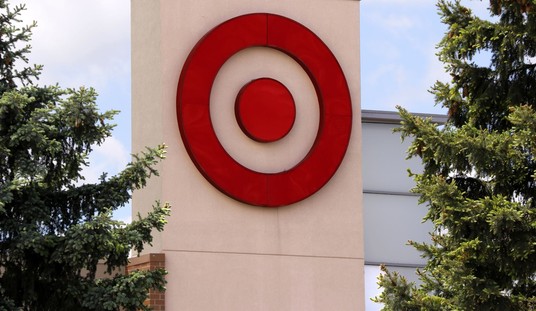Obamacare is “here to stay,” said President Obama in a press conference after the Supreme Court issued its 6-3 ruling that the IRS provision that provides tax subsidies to citizens on state-based health care exchanges also extends to those enrolled through the federal Obamacare exchanges. The clause “established by the state” was the point of contention. Does that mean only state-based exchanges receive the subsidies? That was the question, and it’s been answered much to the ire of conservatives, though we shouldn’t be shocked either; the Roberts Court has veered leftward in recent terms. Republicans were considering temporarily extending those subsidies (if the Burwell decision went the other way) to the states–predominantly run by Republicans–who opted not to create their own state-based exchange, prompting residents to sign up on the federal one.
Yet, given that everyone is eligible for subsides, does this mean state-based exchanges are finished? After all, why stick with a dysfunctional state-based model if your residents could just get Obamacare subsidies now. That pretty much goes against the spirit of the Affordable Care Act, which, was supposed to allow each state to have its own unique health care market for its respective residents. Yet, financial problems and technological shortfalls might make state-based exchange states look to Healthcare.gov for salvation (via NYT) [emphasis mine]:
Now that the Supreme Court has ruled that health insurance consumers can receive federal subsidies regardless of their state’s role in running their insurance market, fewer states may stay in the game.When the Affordable Care Act passed in 2010, most people expected that each state would want to run its own health insurance marketplace. That never really happened, as many states opted to let the federal system, HealthCare.gov, do the work for them. Many of those states that did try running their own marketplaces are starting to think twice.
Now, with the Supreme Court ensuring that every state’s consumers will have equal access to federal subsidies, it is becoming clear that more of those states will revert to a federal system for enrolling people in health insurance.
…
In the first year of operation, three state exchanges — Nevada, New Mexico and Oregon — had technology failures so profound that they handed the bulk of their operations to the federal government. Other states managed to rebound from a troublesome first year by rebuilding their systems, but only with substantial effort and expense. Both Massachusetts and Maryland essentially started from scratch in 2015.
As my colleague Abby Goodnough reported this month, state struggles continue. The Hawaii exchange is collapsing, while Vermont’s looks shaky. Even some exchanges that have performed relatively well — including Washington and Minnesota — are experiencing substantial information technology problems. And the expense of managing an exchange is also climbing in many places as federal start-up funding diminishes. The Washington Post reported in May that nearly half of the states are suffering from financial difficulties.
“There is no new money now to build new infrastructure, and there are no grants available to fix these systems if they’re struggling,” said Heather Howard, the director of the State Health Reform Assistance Network at Princeton University, which was set up to advise states on exchange building. “So the only path forward may be to use HealthCare.gov.”
Recommended
The president said today in the presser “this has never been a government takeover of health care, despite cries to the contrary.” At the same time, if states don’t have the money to revamp their state-based exchanges and opt into the federal one, isn’t that arguably a soft takeover of healthcare? Heck, both state and federal exchanges are under the same umbrella, so one could argue that it does leave the gate open for nationalization. The folks at the left-wing Netroots Nations were, of course, very receptive to single-payer healthcare last July. Vermont was mulling such a model for their health care system. It was scrapped for being too expensive.
If "established by the States" is now synonymous with "established by the federal gov't," didn't every state asset just get nationalized?
— John Hayward (@Doc_0) June 25, 2015Yet, there's also reason to be skeptical concerning the plausible pernicious consequence of this ruling. For starters, the law would have largely remained intact if the Court had decided differently.
Via Megan McArdle:
The ruling itself is pretty simple, and I'll let the chief justice sum it up: "Petitioners’ plain-meaning arguments are strong, but the Act’s context and structure compel the conclusion that Section 36B allows tax credits for insurance purchased on any Exchange created under the Act. Those credits are necessary for the Federal Exchanges to function like their State Exchange counterparts, and to avoid the type of calamitous result that Congress plainly meant to avoid."What is there left to say about this? The policy implications are nonexistent; we will have what we already have.
Yet, one thing that would have changed is that less people would be covered by 2016:
The list of policy changes that would be untouched by any legal ruling is very long. The law’s Medicaid expansion, now covering more than nine million poor Americans, will endure. Regulations on health insurance, limiting insurers’ ability to impose lifetime caps on coverage or exclude customers who have pre-existing illnesses, will remain. Young adults will still be able to stay on their parents’ insurance until they reach 26.Major changes in the way Medicare pays doctors and hospitals, designed to make health care safer and more efficient, will continue. Workplaces will still need to provide places for lactating mothers to pump breast milk. Chain restaurants will still need to publish the calorie counts of their menu items. Drug companies will still need to report the money they pay to doctors.
Taxes on wages and health insurance and medical devices will remain in place.
Even the law’s expansion of insurance coverage to the uninsured — the piece directly challenged by the lawsuit — will not completely evaporate. If the law’s challengers win in court, subsidies that help middle- income people buy insurance in as many as 37 states could disappear. The result, according to an Urban Institute estimate, is that about eight million fewer people would have health insurance in 2016 than would if the law remained untouched.

And, Republicans would have to explain to millions of people why they don’t have health insurance. That’s not necessarily fertile ground for a winning argument on the 2016 campaign trail.
The ruling probably put the state-based exchanges into the cross hairs, but the right has to have another debate as to whether we can truly remove the law in its entirety now. The repeal movement in Congress has zero chance of success. Obama will not cannibalize his signature domestic achievement, and the votes for a veto override are simply not there. Moreover, Republicans had a chance in 2012 to fully repeal Obamacare before it went into effect, prompting millions to enroll through the federal exchanges. That ship sailed when we lost the election.
What’s next?
*Yes, it's true that Obamacare was a Democratic bill, pushed through by a Democratic Congress, and Republicans don't have their fingerprints on it. Yet, do you trust the GOP messaging will be on target to hit back against the "GOP want to gut your health care" attacks? I don't.























Join the conversation as a VIP Member